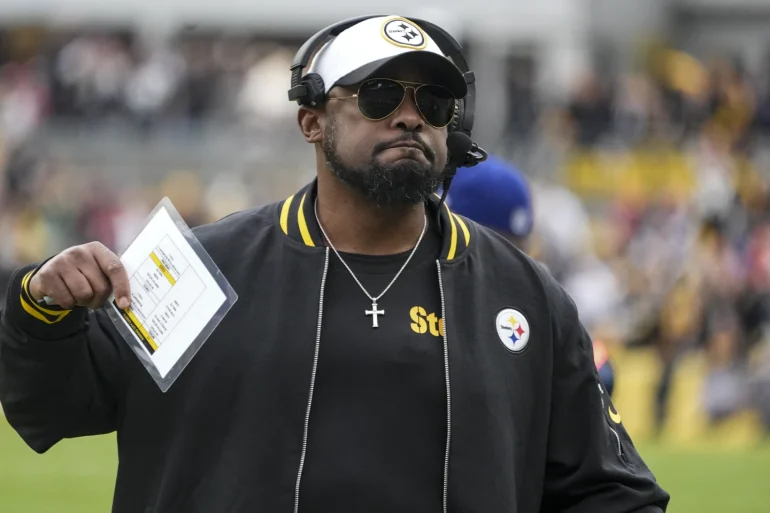Recently, I sparked a heated debate on social media by stating that Mike Tomlin is not the primary reason for the Pittsburgh Steelers’ struggles. While many fans and critics were quick to disagree, I firmly believe that the team’s roster is the root cause of their problems. In this article, we’ll delve deeper into the Steelers’ personnel and compare it to the teams that made this season’s playoffs, highlighting the challenges Tomlin faced.
Firstly, let’s examine the Steelers’ roster. While they have some talented players, such as T.J. Watt and Minkah Fitzpatrick, the team lacks depth and quality in several key areas. The offensive line, in particular, has been a major concern, with inconsistent play and a lack of cohesion. The running back corps, aside from Najee Harris, is also underwhelming. These weaknesses have made it difficult for Tomlin to implement his game plans effectively.
Now, let’s compare the Steelers’ roster to those of the teams that made this season’s playoffs. The AFC playoff teams, including the Kansas City Chiefs, Buffalo Bills, and Cincinnati Bengals, all boast more talented and deeper rosters. The Chiefs, for example, have a potent offense led by Patrick Mahomes, while the Bills have a stout defense and a strong running game. The Bengals, meanwhile, have a well-balanced roster with a mix of veteran leaders and young talent.
In contrast, the Steelers’ roster is lacking in several key areas. They don’t have a true number one wide receiver, and their tight end corps is underwhelming. The defense, while solid, lacks the kind of game-changing players that can dominate games.
Given these roster limitations, it’s unfair to blame Tomlin for the Steelers’ struggles. While he may have made some mistakes, such as clock management issues and questionable play-calling, these errors are magnified by the team’s overall lack of talent.
Furthermore, Tomlin has consistently shown an ability to adapt and evolve as a coach. He’s made adjustments to his scheme and game plans to try and maximize the talent on his roster. While these efforts may not have yielded the desired results, they demonstrate Tomlin’s willingness to learn and improve.
In conclusion, while Mike Tomlin may not be perfect, he’s not the primary problem facing the Pittsburgh Steelers. The team’s roster limitations and lack of depth are the main culprits behind their struggles. Until the Steelers address these issues through free agency, the draft, or other means, they’ll continue to face challenges on the field. Tomlin, meanwhile, deserves credit for his efforts to adapt and improve, despite the limitations of his roster.





























